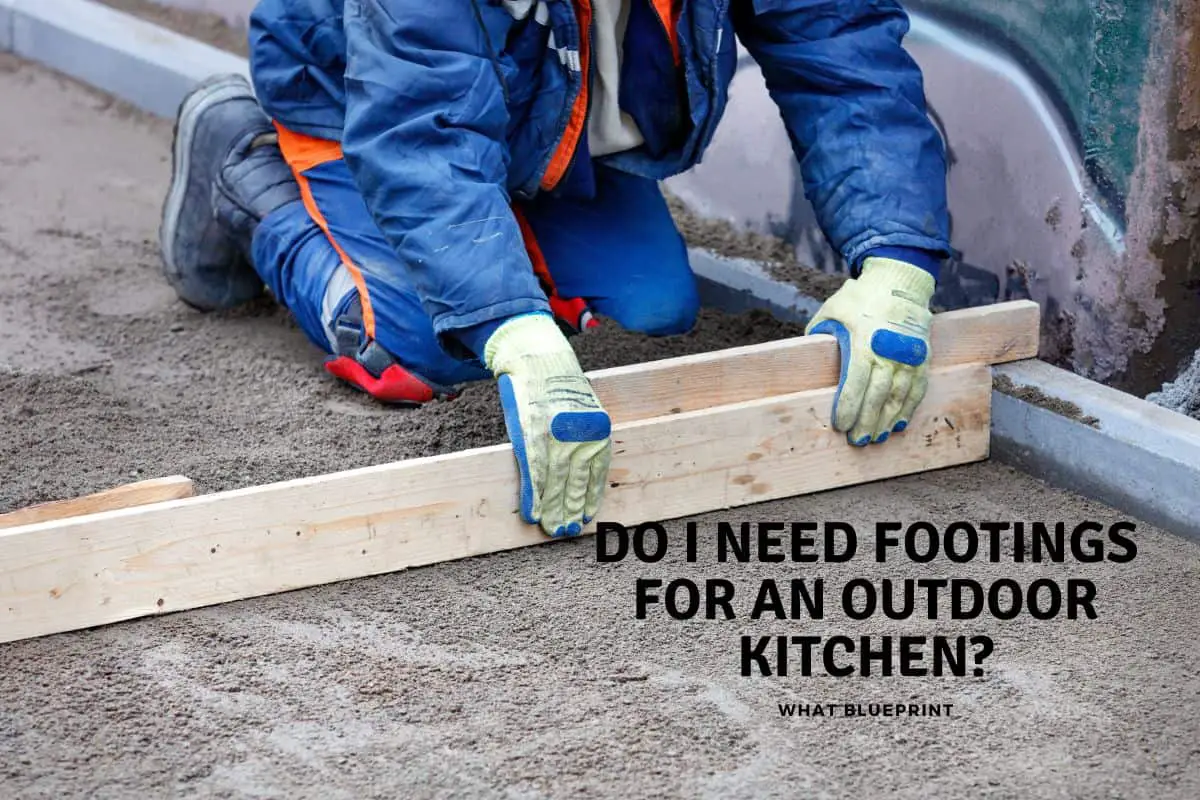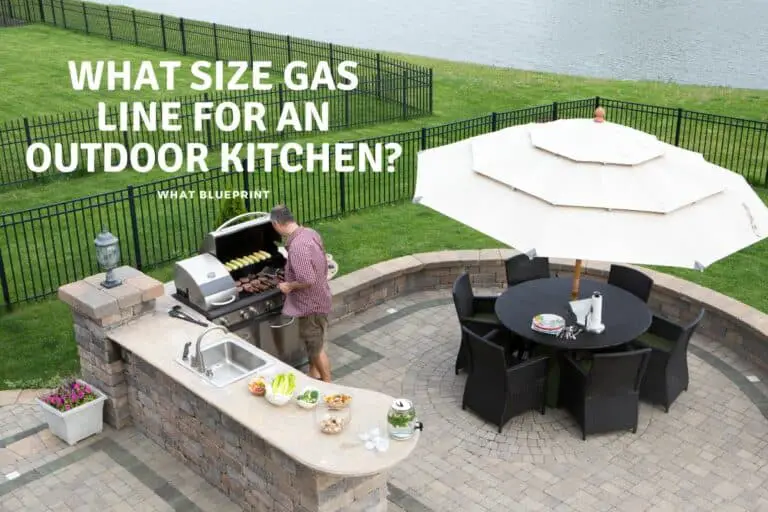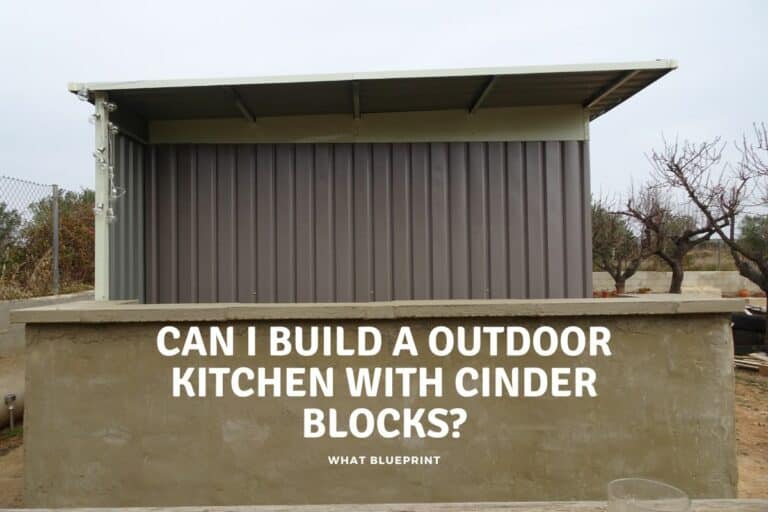Do I Need Footings for an Outdoor Kitchen?
Outdoor kitchens can be considered as an additional structure. Anything built-in in our homes should be adequately supported. The question now is if you need footings for an Outdoor Kitchen?
Yes, you need footings for an outdoor kitchen. A footing built underneath an outdoor kitchen allows them to carry heavier loads, enabling you to add more stuff to your kitchen. A footing is any slab or metal directly in contact with the soil to distribute a building’s weight.
Having a new footing installed may seem quite daunting, especially if it’s just for a kitchen, but it is well worth it. We want to avoid any possible problems with an outdoor kitchen: as such, we have to build them well.
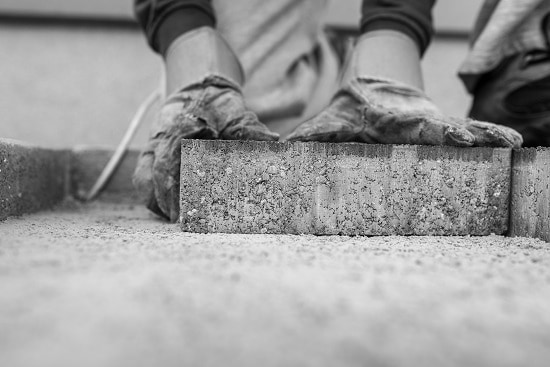
Do I Need Footings for an Outdoor Kitchen?
An outdoor kitchen can weigh quite a lot, especially if you have heavy-duty appliances(like an oven). We want to avoid settling from occurring, especially if you live in an area with smaller soil particles or experience severe climate conditions. For an outdoor kitchen, there are two types of footings that you’ll need.
- Column Footing
Column footings are necessary since most outdoor kitchens will require roofing. It’s essential to have strong columns as this gives us more options for designs or finishes that we might want for our kitchen’s roof.
- Slab Footing
We can’t just put our outdoor kitchen on bare soil; we’ll need a slab to anchor our fixtures and appliance. A concrete slab for an outdoor kitchen only needs to be around 4 inches thick. You can go beyond this number if you plan on building something else in the future, such as a deck.
An outdoor kitchen does not weigh that much compared to our houses, which entails more leeway for the sizing of our footings. Having a smaller-sized footing means fewer expenses and more accessible construction, which makes this type of project much more manageable.
How are footings made for outdoor kitchens?
Footings for outdoor kitchens are much shallower and smaller in size compared to that of a house. Generally, they will still follow the same construction method; it may be tempting to take a few shortcuts, but it’s always a good practice to build things well, so they last.
Here’s a general overview of the process of building a footing:
- Excavation
The general floor area of your outdoor kitchen will need to be excavated. We don’t need to dig that deep. You also have to reinforce the soil to make it suitable for construction. Contractors do this by compacting it with machines to hold soil particles together.
A good tip for excavations is to make the edges sloping rather than directly digging down. Sloped edges allow you to skip some formwork and focus more on the other parts of building a footing.
- Formworks
Once we’ve excavated the area you want to build on, we will need to set up some forms. Formworks act as a mold to hold up our concrete while it’s still wet. Usually, wooden boards are used in this process, and it’s also here where you can begin planning where you want your utilities to run through.
- Concrete
Concrete is a mixture of cement, aggregate, and water, the ratio of which depends on how you want your concrete to turn out. For a small slab that will be used for an outdoor kitchen, the recommended mixture is 1:2:4(cement:sand: stone).
Luckily, you do not need build-in rebar for a concrete slab of this size, but you will need it if you plan on having concrete columns. It takes around 28 days for concrete to cure fully.
- Covering up
Once the concrete is set, you can begin overlaying a finish for it. For an outdoor kitchen, tile works best considering its resilience to outdoor kitchens and its ease of maintenance or repair.
Building footings do take time to build correctly, but the great thing is that they’ll last. On average, concrete foundations can last up to 100 years. Remember that you may need to consult with a local building official as structural work, such as foundations and columns, is often regulated.
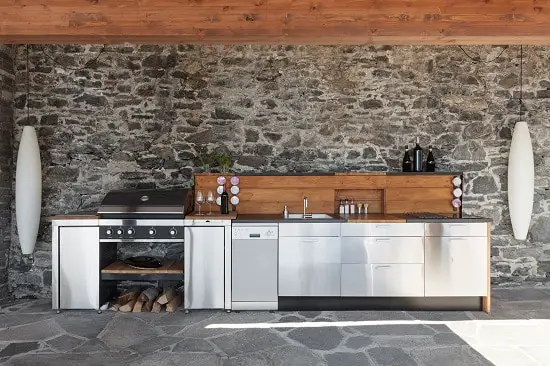
Can I build an outdoor kitchen on a patio?
It’s not uncommon for homeowners to repurpose their patios into other outdoor spaces. An outdoor kitchen can work well with an already deck, albeit with a few caveats.
Here’s a brief rundown of what you need to consider if you’re planning on reusing a patio for an outdoor kitchen.
- Condition of Patio
The main concern for an old patio is if it can still support the total weight of a kitchen and if it can drain water well. More often than not, you’ll need some renovation work for an old patio to be compatible with a kitchen.
- Design of the Kitchen
We need to design an outdoor kitchen compatible with an old patio. Any old fixtures, utilities, finishes, etc., will also have to be changed. Patios are not often designed to support a kitchen, so you’ll need to make adjustments such as these to make this work.
- Compatibility with House
We already have utilities such as pipes and wires running throughout your homes. Having a kitchen built right beside your house does make it easier to attach it to these utilities.
Of course, you might be limited in terms of design to make way for the location of said utilities and any other fixtures (Doors, Windows, Vents, etc.) that may get affected.
The most significant benefit of reusing an old patio is that it is probably already sheltered and connected to utilities, significantly reducing the construction work needed. However, this means there will be limitations on what you can build for a kitchen compared to building from scratch.
We have almost countless articles on designing, constructing, fitting and using outdoor kitchen ( we love them here on perfect outdoor spaces) we have included a few in the list below, but a quick search will bring up the full list.
Conclusion
An outdoor kitchen needs to have footings. Footings distribute the weight of buildings down to the ground.
The footings you will need will depend on your outdoor kitchen’s design, the appliances you plan to install, and their roofing.
Sources
- https://www.concretenetwork.com/concrete/footing_fundamentals/
- https://www.gardeningetc.com/advice/how-to-design-an-outdoor-kitchen
- https://www.crownpavilions.com/blog/garden-room-with-kitchen/
- https://www.concretedecor.net/departments/outdoor-spaces/beyond-the-kit-outdoor-kitchens-in-cold-climates/

